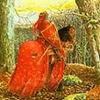LOUVRE (París)
Claude le Lorrain - Le dessinateur face à la nature
21 de abril - 18 de julio de 2011
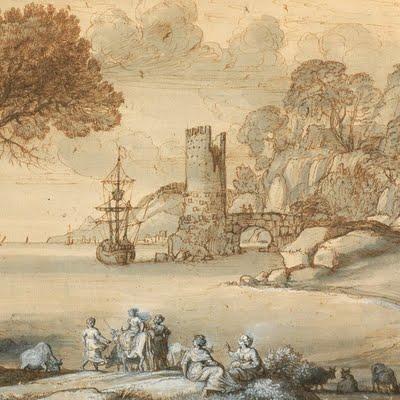 Croquis sur le vif, dessins préparatoires, grandes compositions de paysages à caractère religieux ou mythologique témoignent de l'oeuvre de ce peintre, dessinateur et graveur, reconnu comme l'un des plus grands maîtres du paysage. Au cours d’une longue carrière presque entièrement faite à Rome, de la fin des années 1620 jusqu’à sa mort en 1682, Claude Gellée, dit le Lorrain, a créé un art du paysage qui a profondément influencé les générations suivantes et, à bien des égards, changé la façon dont nous percevons la nature. Si avant lui, dans les premières années du XVIIe siècle, Annibale Carracci et ses élèves avaient perfectionné un type de paysage « classique », Claude Gellée a parfait ce genre en y apportant son don pour une peinture fine, lisse et extrêmement raffinée, et surtout une sensibilité extraordinaire pour les effets de lumière et les phénomènes de la nature.
Croquis sur le vif, dessins préparatoires, grandes compositions de paysages à caractère religieux ou mythologique témoignent de l'oeuvre de ce peintre, dessinateur et graveur, reconnu comme l'un des plus grands maîtres du paysage. Au cours d’une longue carrière presque entièrement faite à Rome, de la fin des années 1620 jusqu’à sa mort en 1682, Claude Gellée, dit le Lorrain, a créé un art du paysage qui a profondément influencé les générations suivantes et, à bien des égards, changé la façon dont nous percevons la nature. Si avant lui, dans les premières années du XVIIe siècle, Annibale Carracci et ses élèves avaient perfectionné un type de paysage « classique », Claude Gellée a parfait ce genre en y apportant son don pour une peinture fine, lisse et extrêmement raffinée, et surtout une sensibilité extraordinaire pour les effets de lumière et les phénomènes de la nature. EL PRADO (Madrid)
No sólo Goya5 de mayo - 31 de julio de 2011
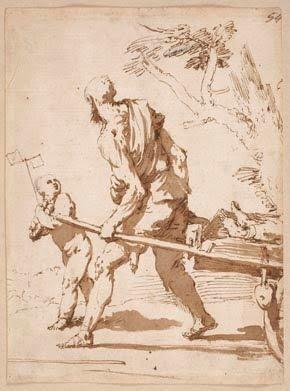 La exposición muestra una selección de las adquisiciones de obra sobre papel –dibujos, estampas y fotografías- realizadas por el Museo del Prado entre 1997 y 2010. Gracias a esta muestra, el público puede admirar por primera vez las obras más singulares adquiridas durante estos años, conservadas habitualmente en el Gabinete de Dibujos y Estampas debido a sus frágiles peculiaridades materiales. Al mismo tiempo, la exposición permite dar a conocer las líneas maestras que han determinado la política de adquisiciones del museo en el ámbito de las obras sobre papel. Bajo el título de No solo Goya, la exposición trata de de poner manifiesto que, si bien la obra de Goya ha constituido uno de los ejes de la política de adquisiciones del Museo, quizá el de mayor repercusión mediática por su innegable valor, ha habido también una serie muy numerosa de obras ingresadas en la colección del Prado de no menor importancia artística. A partir de esta idea, la exposición se organiza en distintas secciones que responden a las principales líneas de adquisición establecidas por el Museo. La exposición define también las principales líneas de investigación y exposición de la colección en los próximos años a través de sus ocho apartados.THE J. PAUL GETTY MUSEUM (Los Ángeles)
La exposición muestra una selección de las adquisiciones de obra sobre papel –dibujos, estampas y fotografías- realizadas por el Museo del Prado entre 1997 y 2010. Gracias a esta muestra, el público puede admirar por primera vez las obras más singulares adquiridas durante estos años, conservadas habitualmente en el Gabinete de Dibujos y Estampas debido a sus frágiles peculiaridades materiales. Al mismo tiempo, la exposición permite dar a conocer las líneas maestras que han determinado la política de adquisiciones del museo en el ámbito de las obras sobre papel. Bajo el título de No solo Goya, la exposición trata de de poner manifiesto que, si bien la obra de Goya ha constituido uno de los ejes de la política de adquisiciones del Museo, quizá el de mayor repercusión mediática por su innegable valor, ha habido también una serie muy numerosa de obras ingresadas en la colección del Prado de no menor importancia artística. A partir de esta idea, la exposición se organiza en distintas secciones que responden a las principales líneas de adquisición establecidas por el Museo. La exposición define también las principales líneas de investigación y exposición de la colección en los próximos años a través de sus ocho apartados.THE J. PAUL GETTY MUSEUM (Los Ángeles)Paris: Life & Luxury
26 de abril - 7 de agosto de 2011
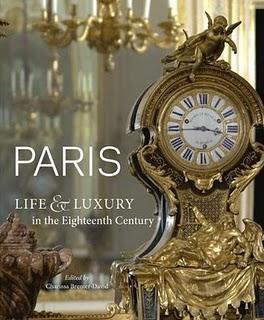 This exhibition evokes the rich material ambiance of Paris during the mid-18th century. It brings together a wide variety of objects—from candlesticks and firedogs, to furniture and clocks, dressing gowns and jewelry, musical instruments and games—all from elite society in Paris, the fashion and cultural epicenter of Europe at the time. Paris was a center of great cultural achievement and artistic creativity during the reign of Louis XV, from 1723–1774, yet the virtuoso inventiveness and superlative craftsmanship of the period remain largely unfamiliar and underappreciated today, overshadowed as they are by the tumultuous social and political events of the French Revolution of 1789. Following the traditional visual allegory of the "Four Times of Day," objects in this exhibition are grouped and arranged according to their associations with common activities as pursued indoors during the course of a single day, from morning to night. By this select juxtaposition, the respective relationships, functions, and appearances of these works of art suggest the complex and nuanced behavior, practices, and aesthetics of Parisian polite society in the domestic interior.MUSÉE D'ART DE LA VILLE DE LUXEMBOURG
This exhibition evokes the rich material ambiance of Paris during the mid-18th century. It brings together a wide variety of objects—from candlesticks and firedogs, to furniture and clocks, dressing gowns and jewelry, musical instruments and games—all from elite society in Paris, the fashion and cultural epicenter of Europe at the time. Paris was a center of great cultural achievement and artistic creativity during the reign of Louis XV, from 1723–1774, yet the virtuoso inventiveness and superlative craftsmanship of the period remain largely unfamiliar and underappreciated today, overshadowed as they are by the tumultuous social and political events of the French Revolution of 1789. Following the traditional visual allegory of the "Four Times of Day," objects in this exhibition are grouped and arranged according to their associations with common activities as pursued indoors during the course of a single day, from morning to night. By this select juxtaposition, the respective relationships, functions, and appearances of these works of art suggest the complex and nuanced behavior, practices, and aesthetics of Parisian polite society in the domestic interior.MUSÉE D'ART DE LA VILLE DE LUXEMBOURGÉmotions. Reflets dans la peinture et la photographie
6 de mayo de 2011 - 7 de mayo de 2012
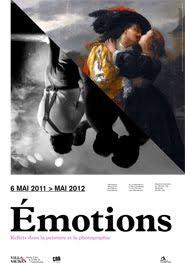 Art is often invested with emotions. Depending on the context, works of art – paintings and sculptures, but also photographs and videos – are likely to trigger reactions that mirror the viewer’s personal emotional state. The exhibition Emotions. Reflections in painting and photography gathers a selection of 17th to 19th-century works from the three collections of the Villa Vauban alongside contemporary photographs from the collection of the National Audiovisual Centre (CNA). The resulting interaction of various modes of representation, perspectives, materials and forms allows visitors to discover new and surprising aspects in the works of the Old Masters.Since the dawn of time, art has been addressing timeless questions related to man’s existence. Yet every era has its own conventions of representation. In the following rooms visitors are given the opportunity to experience and question their own feelings in dialogue with the works, while discovering numerous fascinating aspects of the history of painting.The paintings in this exhibition, which includes works by Jan Steen, Giovanni Antonio Canal, aka Canaletto, Paul Delaroche and Alexandre Calame, cover a wide range of pictorial genres, from portraits and genre scenes to landscape and history paintings.
Art is often invested with emotions. Depending on the context, works of art – paintings and sculptures, but also photographs and videos – are likely to trigger reactions that mirror the viewer’s personal emotional state. The exhibition Emotions. Reflections in painting and photography gathers a selection of 17th to 19th-century works from the three collections of the Villa Vauban alongside contemporary photographs from the collection of the National Audiovisual Centre (CNA). The resulting interaction of various modes of representation, perspectives, materials and forms allows visitors to discover new and surprising aspects in the works of the Old Masters.Since the dawn of time, art has been addressing timeless questions related to man’s existence. Yet every era has its own conventions of representation. In the following rooms visitors are given the opportunity to experience and question their own feelings in dialogue with the works, while discovering numerous fascinating aspects of the history of painting.The paintings in this exhibition, which includes works by Jan Steen, Giovanni Antonio Canal, aka Canaletto, Paul Delaroche and Alexandre Calame, cover a wide range of pictorial genres, from portraits and genre scenes to landscape and history paintings.CENTRE DE LA VIEILLE CHARITÉ (Marsella)
L'Orientalisme en Europe: De Delacroix à Matisse
28 de mayo - 28 de agosto de 2011
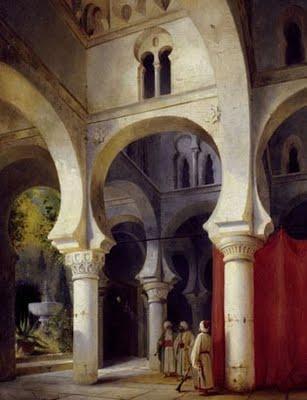 La fascination pour l’Orient qui traverse l’histoire de l’art occidental connait un essor tout particulier au XIXe siècle. Entre la campagne d’Egypte de Bonaparte (1798-1801) et le séjour de Matisse en Afrique du nord (1906), l’Orientalisme va connaître son véritable âge d’or. Les vues d’Egypte rapportées par les artistes qui accompagnèrent Bonaparte constituent, avec l’illustration des premiers actes de la légende napoléonienne, les premiers jalons d’une nouvelle découverte du monde oriental par le public européen. En suscitant un engouement dans toute l’Europe pour le passé pharaonique, elles initient un mouvement d’intérêt général et durable pour tout ce qui touche à l’Orient : Au siècle de Louis XIV on était helléniste, maintenant on est orientaliste pourra dire Victor Hugo. L’Orientalisme est indissociable de l’expansion coloniale européenne. Le déclin de l’empire ottoman, l’implantation des puissances européennes au Moyen-Orient, en Afrique du Nord vont ouvrir aux artistes les portes d’un monde qui restait jusque-là difficilement accessible. Le choc de cette rencontre leur ouvre de nouvelles perspectives. Au cours de son voyage au Maroc en 1832, Delacroix pensera trouver dans le dépaysement oriental des réponses à son profond désir de renouvellement.
La fascination pour l’Orient qui traverse l’histoire de l’art occidental connait un essor tout particulier au XIXe siècle. Entre la campagne d’Egypte de Bonaparte (1798-1801) et le séjour de Matisse en Afrique du nord (1906), l’Orientalisme va connaître son véritable âge d’or. Les vues d’Egypte rapportées par les artistes qui accompagnèrent Bonaparte constituent, avec l’illustration des premiers actes de la légende napoléonienne, les premiers jalons d’une nouvelle découverte du monde oriental par le public européen. En suscitant un engouement dans toute l’Europe pour le passé pharaonique, elles initient un mouvement d’intérêt général et durable pour tout ce qui touche à l’Orient : Au siècle de Louis XIV on était helléniste, maintenant on est orientaliste pourra dire Victor Hugo. L’Orientalisme est indissociable de l’expansion coloniale européenne. Le déclin de l’empire ottoman, l’implantation des puissances européennes au Moyen-Orient, en Afrique du Nord vont ouvrir aux artistes les portes d’un monde qui restait jusque-là difficilement accessible. Le choc de cette rencontre leur ouvre de nouvelles perspectives. Au cours de son voyage au Maroc en 1832, Delacroix pensera trouver dans le dépaysement oriental des réponses à son profond désir de renouvellement. GEMÄLDEGALERIE (Berlín)
The Vasari Century. Florentine Draughtsmen of the Cinquecento
17 de mayo - 21 de agosto de 2011
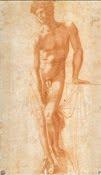 As the fruits of a collaborative project with the Kunsthistorisches Institut in Florence, the Kupferstichkabinett proudly dedicates this one-room show to the great artist, artists' biographer and art theoretician, Giorgio Vasari (1511-1574), to mark the 500th anniversary of his birth. As well as two original copies of his 'Lives of the Most Eminent Painters, Sculptors, and Architects' (one first edition from 1550 and a second edition from 1568), the exhibition also includes a small but impressive selection of freehand drawings executed by 16th century Florentine painters and sculptors. Besides works by Vasari himself, also on display are several sheets by his friends, colleagues and successors, as well as drawings from the generation before him, by his teachers and role models. Vasari tackled the creative work of many of these artists in his 'Lives', including that of Fra Bartolomeo, Andrea del Sarto and Franciabigio, Baccio Bandinelli and Benvenuto Cellini, Jacopo Pontormo and Francesco Salviati, Giambattista Naldini and Jacopo Zucchi.
As the fruits of a collaborative project with the Kunsthistorisches Institut in Florence, the Kupferstichkabinett proudly dedicates this one-room show to the great artist, artists' biographer and art theoretician, Giorgio Vasari (1511-1574), to mark the 500th anniversary of his birth. As well as two original copies of his 'Lives of the Most Eminent Painters, Sculptors, and Architects' (one first edition from 1550 and a second edition from 1568), the exhibition also includes a small but impressive selection of freehand drawings executed by 16th century Florentine painters and sculptors. Besides works by Vasari himself, also on display are several sheets by his friends, colleagues and successors, as well as drawings from the generation before him, by his teachers and role models. Vasari tackled the creative work of many of these artists in his 'Lives', including that of Fra Bartolomeo, Andrea del Sarto and Franciabigio, Baccio Bandinelli and Benvenuto Cellini, Jacopo Pontormo and Francesco Salviati, Giambattista Naldini and Jacopo Zucchi.MUSEUM BERGGRUEN (Berlín)
Brassaï Brassaï. In the Studio and on the Street
27 de mayo - 28 de agosto de 2011
 Here we see Georges Braque gesturing to a cow, while in other shots strange beings stare out at us - the Hungarian artist Brassaï (1899-1984), famous for his night shots of Paris in the 1930s, spent his life tracking down magical moments, mysterious signs and mysterious creatures. The National Gallery is dedicating a double exhibition to the Hungarian photographer before the Museum Berggruen closes its doors in September 2011 for renovation work in preparation for the opening of its new wing in June 2012. In the Museum Berggruen, Brassaï's portrait and studio shots invite viewers to step into the world of his artist friends, of Picasso and Matisse, Giacometti and Braque. His photographs tell of the paintings and sculptures, many of which now hang in the Museum Berggruen today, that appear to lead a life of their own while still in the studios where they were created.
Here we see Georges Braque gesturing to a cow, while in other shots strange beings stare out at us - the Hungarian artist Brassaï (1899-1984), famous for his night shots of Paris in the 1930s, spent his life tracking down magical moments, mysterious signs and mysterious creatures. The National Gallery is dedicating a double exhibition to the Hungarian photographer before the Museum Berggruen closes its doors in September 2011 for renovation work in preparation for the opening of its new wing in June 2012. In the Museum Berggruen, Brassaï's portrait and studio shots invite viewers to step into the world of his artist friends, of Picasso and Matisse, Giacometti and Braque. His photographs tell of the paintings and sculptures, many of which now hang in the Museum Berggruen today, that appear to lead a life of their own while still in the studios where they were created. 